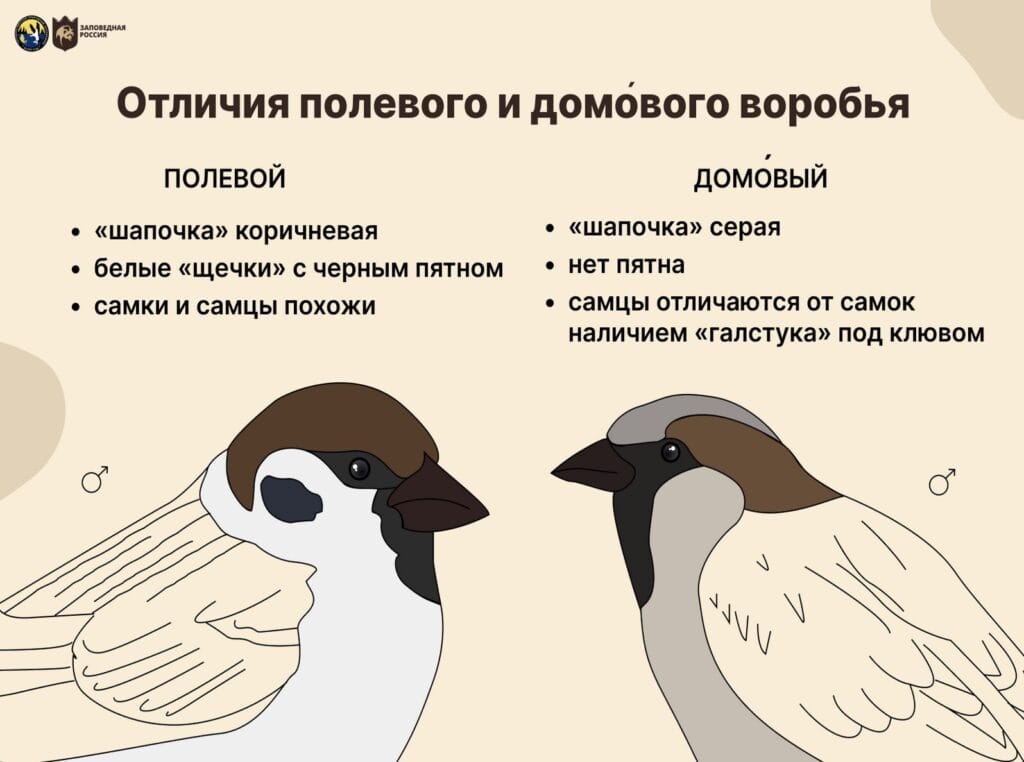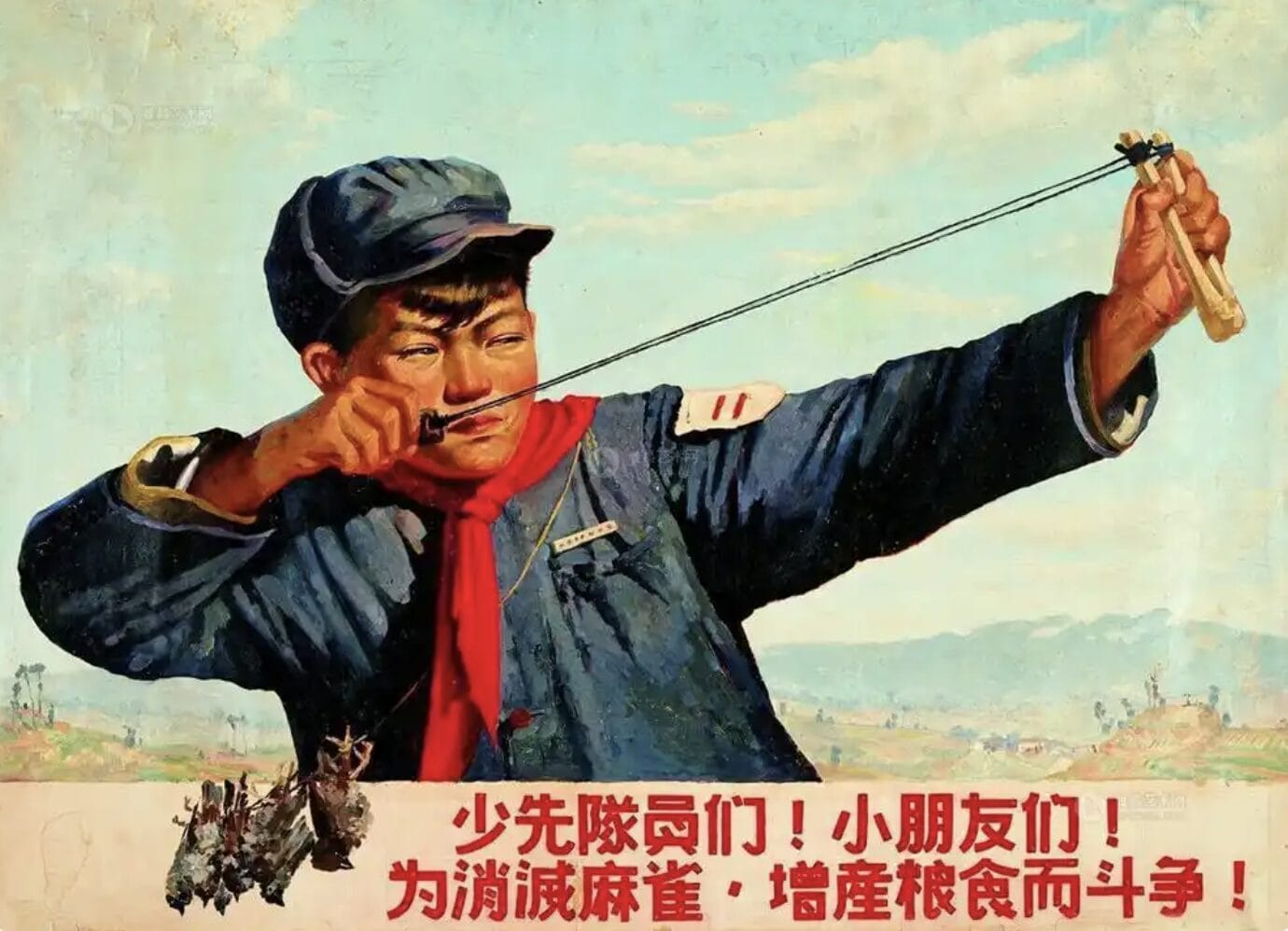Articles about the famous Chinese sparrow eradication campaign, which are published in Russian-language media, blogs and social networks, claim that the import of sparrows from abroad helped China restore the population of these birds. We have verified the accuracy of this information.
Texts detailing the history of sparrow eradication in China at the turn of the 1950s and 1960s usually end with the words: “The campaign was recognized as a mistake, and Mao Zedong made a personal decision to suspend the fight against sparrows. To restore the sparrow population, these birds had to be imported from Canada and the USSR.” Similar publications can be found in Facebook, "VKontakte", on entertainment sites, in the magazine "Amateur", newspaper "Arguments and facts", publication Techinsider and other sources.

The Four Pests campaign was part of the government's Great Leap Forward (1958–1962) economic and political program Mao Zedong. The four main enemies of the Chinese economy were rats, flies, mosquitoes and sparrows. Particular attention was paid to sparrows: Chinese scientists estimate that each sparrow eats about 4.5 kg of grain annually, and killing 1 million sparrows could theoretically save enough food to feed 60,000 people.
Stefano Mancuso in Plant Nation quotes memoirs of the Soviet scientist Mikhail Klochko, who witnessed the beginning of the campaign against sparrows in Beijing: “In the morning I was woken up by a woman’s scream. Rushing to the window, I saw a young woman running back and forth on the roof of a neighboring house, feverishly shaking a bamboo pole to which a large sheet was attached. Suddenly the woman stopped screaming, apparently to catch her breath, but a moment later, below, at the end of the street, a drum beat, and she again began to utter blood-curdling screams and wildly shake her unusual banner. This went on for several minutes. Then the drums stopped, and so did the woman. Then I noticed that on all the upper floors of my hotel, women dressed in white were waving sheets and towels, preventing sparrows from landing on the building. This was the beginning of the Great Sparrow campaign. All day I heard drums, shots, screams, saw sheets fluttering, but I never noticed a single sparrow anywhere. It is difficult to say whether the poor birds sensed a mortal threat and flew away to a safe area in advance, or whether there were never sparrows in this place at all. But the battle continued unabated until midday, and the entire hotel staff took part in it: receptionists, administrators, translators, maids and everyone else.”
The environmental consequences were not long in coming. Dutch historian-sinologist Frank Dikötter in his book “Mao's Great Famine” writes: “By April 1960, when management realized that birds also eat insects, sparrows were removed from the list of pests, replacing them with bedbugs. But it was too late: after 1958, massive insect infestations began, destroying a significant part of the crop. The greatest damage was done before the harvest - swarms of locusts obscured the sky and covered the countryside with a living, moving carpet, devouring the crops. In the summer of 1961, taking advantage of the drought in Hubei Province, they captured about 13,000 hectares in the Xiaogang region alone. More than 50,000 hectares were devastated in the Jinzhou area. In the province as a whole, about 15% of the rice crop was destroyed by voracious locusts. Everything was eaten clean - more than half of all cotton was lost in the Yichang region. In the vicinity of Nanjing, where the fight against sparrows was especially fierce, in the fall of 1960 about 60% of all fields were damaged by insects, which led to an acute shortage of vegetables.” This environmental imbalance was one of the reasons Great Chinese Famine, which led to the death, according to various estimates, from 15 to 55 million people. It was then, if you believe online publications, that China imported sparrows from the USSR and Canada in order to somehow correct the situation.
However, all these events took place against the backdrop of rapidly deteriorating Soviet-Chinese relations. Mao Zedong was dissatisfied de-Stalinization in the USSR and began to criticize the Soviet leadership, first at closed party meetings, and then publicly. He accused the USSR of betraying the ideals of Leninism, and in 1962, as Viktor Usov writes in the book “History of the People's Republic of China”, and even said that the leadership of the country and the party in the USSR is now usurped by the revisionists. This criticism did not go unnoticed in the USSR, and in the end there was complete break relations between the two countries. They were restored only after the death of Mao Zedong. As for Canada, since 1951 this country has not even had diplomatic relations with China; they recovered only in 1970. In addition, Canada has a predominant population house sparrows, and in China they lived and live mainly field.

If we still admit the hypothetical possibility that in the name of saving nature, China and the USSR briefly forgot about their differences, it would take many years to prepare such an operation. For example, in order to raise several tens of thousands of pigeons (specific figures differ in different sources, ranging between 30,000 and 40,000) for the opening of the Festival of Youth and Students, it took a year of preparation. The existence of this program is evidenced by numerous documents: the resolution of the executive committee of the Moscow City Council “About the import and breeding of pigeons in Moscow", guidelines for breeding pigeons, publications V press, photos. Transporting hundreds of thousands (or even, as some sources write, millions) of sparrows to China would be a much larger-scale project, but there is no evidence of such an operation in open sources. The import of sparrows from both the USSR and Canada is not mentioned in the most authoritative English-language publications about the “Four Pests” campaign and the Great Chinese Famine - the books “Mao's Great Famine" Frank Dikötter, "Gravestone. Great Famine of China 1958–1962"Yang Jisheng and "Mao's fight against nature» Judith Shapiro.
Thus, neither Russian nor foreign sources contain reliable data that would confirm the sending of a large number of sparrows from the USSR to China. In addition, relations between the two states deteriorated during that period, and the likelihood that the Chinese government would turn to the USSR for help was extremely low. The same can be said about Canada. Apparently, the sparrow population has recovered naturally.
Cover photo: screenshot from baijahao.baidu.com
Read on topic:
- Is it true that in Chinese the word “crisis” is made up of the characters for “danger” and “opportunity”?
- Is it true that in China the family of an executed criminal must pay the cost of the bullet?
- Is it true that in the fall waxwings eat fermented rowan berries and, drunk, fall en masse onto the streets?
If you find a spelling or grammatical error, please let us know by highlighting the error text and clicking Ctrl+Enter.






